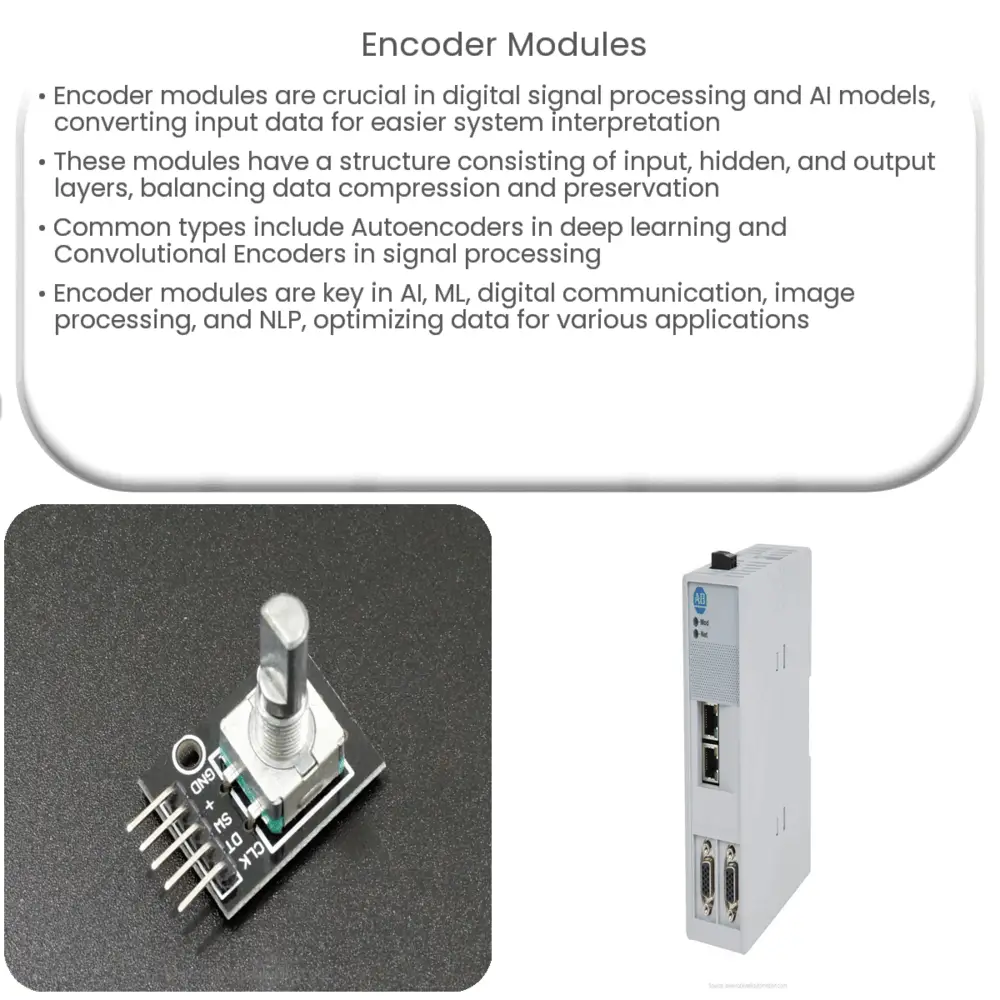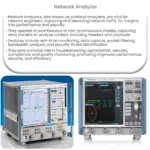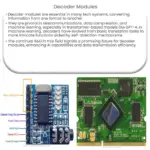Explore the vital role of Encoder Modules in AI, machine learning, digital signal processing, and NLP. Unravel their structure, types, and applications.

Introduction to Encoder Modules
Encoder modules constitute an integral part of various digital signal processing systems and artificial intelligence models. These modules encode the input data into a format that is easier for the system or model to interpret and process.
Structure and Function of Encoder Modules
The basic structure of an encoder module typically includes an input layer, a series of hidden layers, and an output layer, together forming a ‘deep learning’ network. The input layer accepts raw data, while the output layer produces a reduced or ‘encoded’ version of that data.
The hidden layers in between carry out a series of transformations on the input data. This process involves compressing the data while attempting to preserve as much of the original information as possible. The quality of an encoder module, therefore, can be judged by how well it manages to strike a balance between compression and information preservation.
Types of Encoder Modules
- Autoencoder: This is perhaps the most commonly used type of encoder module in deep learning. It is a neural network that is trained to replicate its input to its output. The ‘hidden’ layer that describes the code is smaller than the input layer, and this arrangement allows the autoencoder to learn a compressed, distributed representation of the data.
- Convolutional Encoder: This is commonly used in signal processing. Here, the encoder applies a series of convolution operations on the input data, transforming it into an encoded format. Convolutional encoders are typically employed in communication systems, like digital TV broadcasting, to add redundancy to the data that can be used for error detection and correction.
Applications of Encoder Modules
- Encoder modules are vital components of artificial intelligence (AI) and machine learning (ML) systems. They help in dimensionality reduction, making complex data more manageable for these systems.
- In digital communication, encoder modules ensure data integrity during transmission, reducing the chance of data corruption.
- In image and video processing, encoder modules compress data without significantly losing quality, ensuring efficient storage and transmission.
- Finally, in natural language processing (NLP), encoder modules transform text into a format that can be easily processed by language models, greatly aiding in tasks such as translation, summarization, and sentiment analysis.
However, to gain a deeper understanding of these advanced applications, it is essential to explore how encoder modules operate within neural networks and deep learning architectures, which we will cover in the second part of this article.
Encoder Modules in Neural Networks and Deep Learning
In the realm of deep learning, encoder modules play a pivotal role in understanding and processing complex data. They are often used in conjunction with decoder modules to form autoencoders.
Autoencoders are a type of artificial neural network that learns to copy their input to their output. They compress the input into a latent-space representation and then reconstruct the output from this representation. The latent-space representation encapsulates the ‘meaning’ or ‘essence’ of the input data. In this architecture, the encoder module carries out the task of data compression and dimensionality reduction.
Encoder Modules in Natural Language Processing (NLP)
In NLP, encoder modules are often part of architectures like transformer models. Here, the encoder’s primary function is to transform textual input into a format (usually a sequence of vectors) that can be easily interpreted by subsequent components of the model. The popular BERT (Bidirectional Encoder Representations from Transformers) model is a great example of this, with the encoder module being central to its operation.
Encoder modules in NLP models, such as Seq2Seq (Sequence-to-Sequence), are responsible for converting a source sequence (a sentence in the source language) into a rich, fixed-size vector representation. This representation is then passed to a decoder to generate a target sequence (the translated sentence in the target language).
Conclusion
In conclusion, encoder modules are a powerful tool that help in bridging the gap between raw data and systems or models that require processed data in a specific format. They facilitate efficient and effective data analysis, serving as the backbone of various systems, from digital signal processing and communication systems to AI and ML models.
The evolving landscape of technology and AI will undoubtedly continue to advance and refine the functionalities of encoder modules, enabling more sophisticated and efficient data interpretation and processing. While this article provides an overview of their structure, types, and applications, there’s an ocean of deeper technical intricacies and potential applications waiting to be explored by keen learners and professionals alike.




